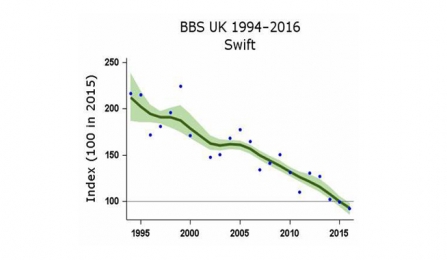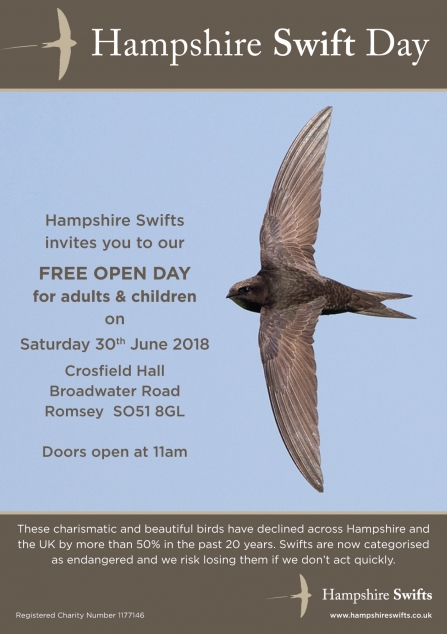In early May our hitherto quiet villages, towns and cities are enlivened by the return of one of the UK’s most iconic bird species, the swift. These dark, crescent-shaped birds are masters of the air, spending the majority of their lives airborne, feeding, sleeping and mating in the air, landing only to breed.
They are only short-term visitors to the UK, capitalising on an abundance of insects and airborne spiders during a short summer season, returning to the skies above the equatorial rainforests of Congo and Mozambique as soon as their young have fledged in July (please click the map to view a larger version).
Originally nesting in mature trees they have adapted to breed almost entirely on human habitations, relying on small gaps and holes through which they can access a safe space in which to lay their eggs. Swifts are social birds and on summer evenings groups of feeding swifts will spontaneously coalesce into a tight formation of screaming birds flying at breakneck speed between buildings before just as suddenly dispersing, often returning to their nesting sites. The sight and sound of this behaviour marks the summer and makes the swift one of our best loved summer migrants.






